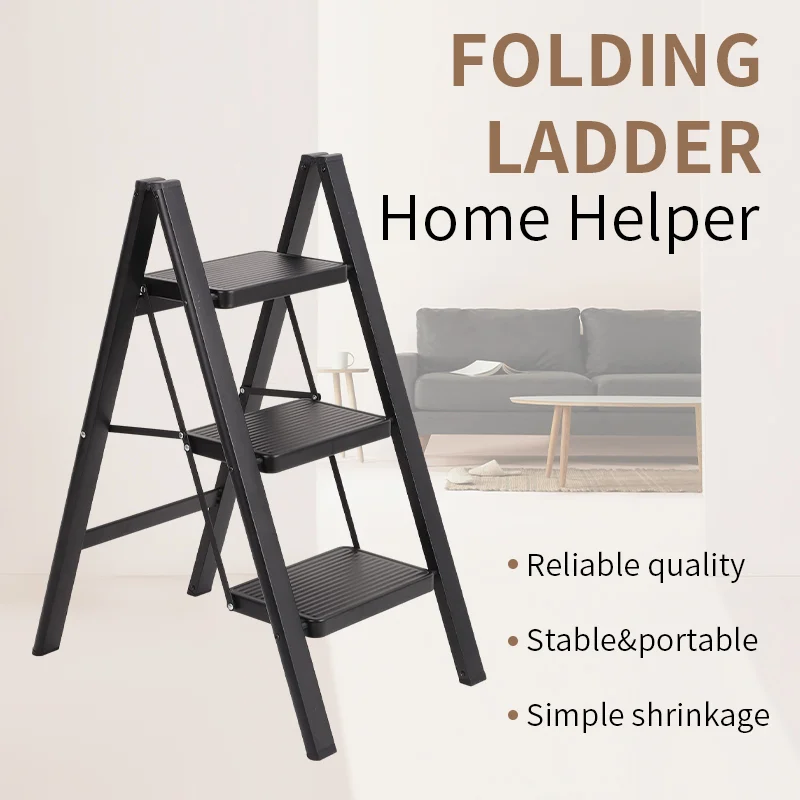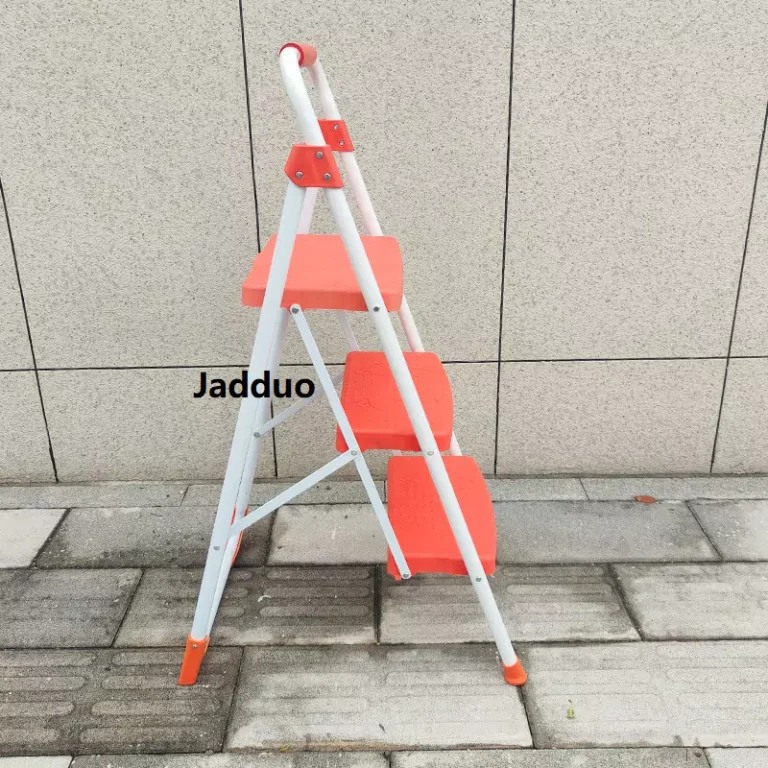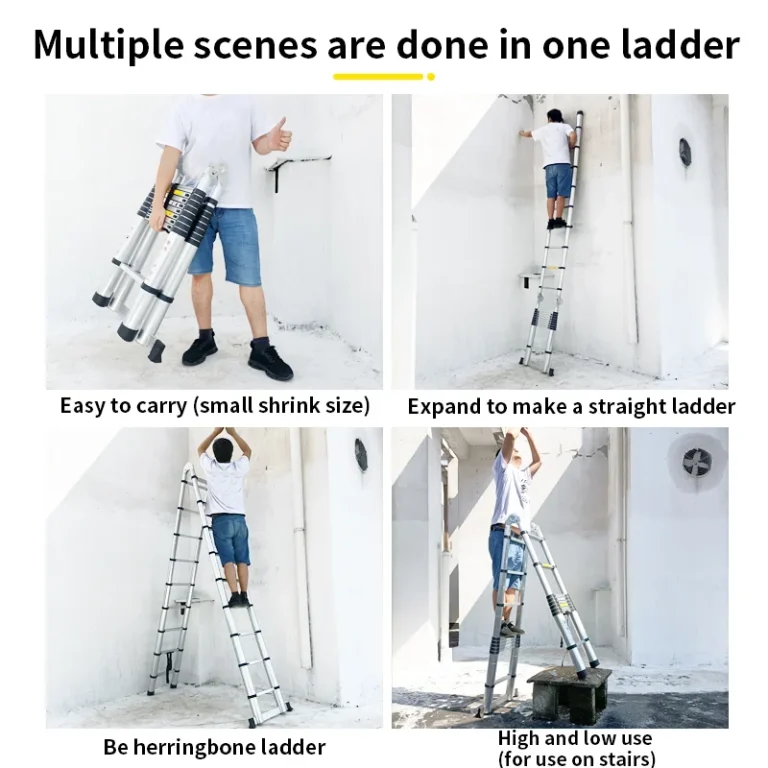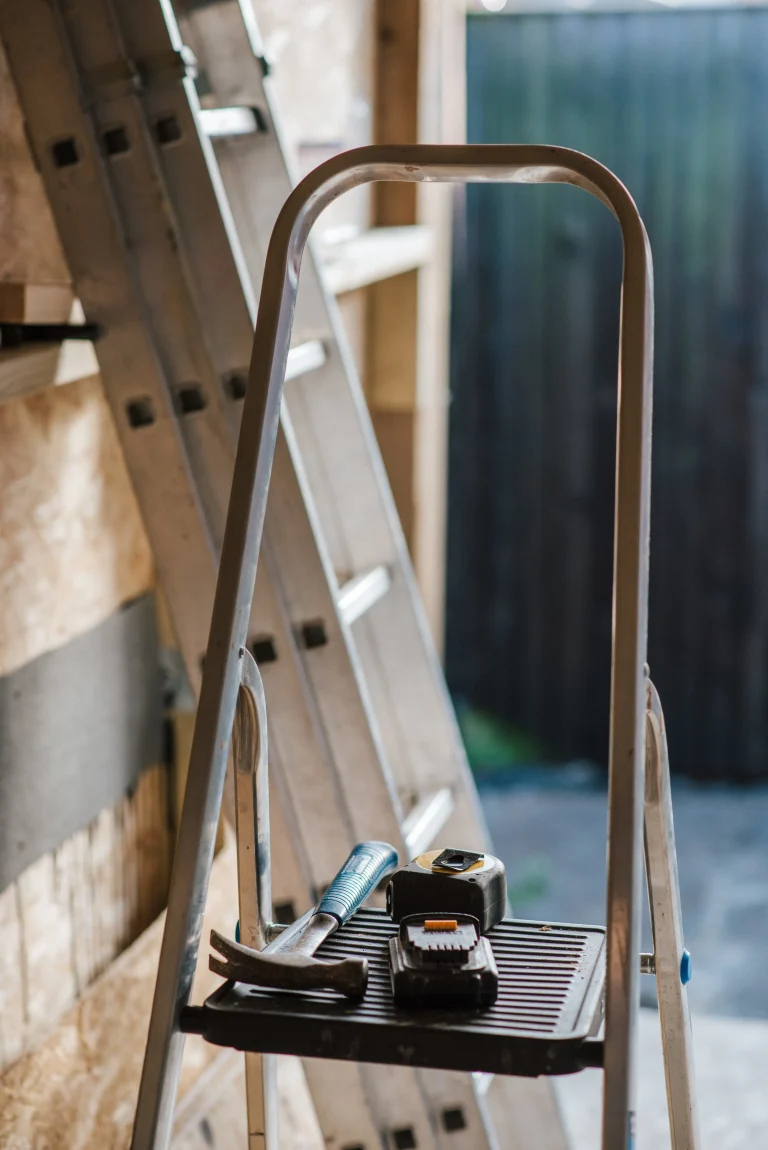When selecting a collapsible home ladder, focus on sturdiness, steadiness, and protective elements. Top materials include light aluminum for daily jobs and strong steel for tough work. Seek grip-enhanced feet, reliable locking systems, and strengthened connections to guarantee safety and durability. Check for ANSI or EN131 compliance, and think about space-saving storage and customizable height for flexibility. Regular care—such as checking locks and cleaning steps—preserves the ladder’s condition while maintaining safe use.
Essential Traits to Assess in Foldable Home Ladders
A ladder’s sturdiness relies on its build, weight limit, and steadiness traits. Aluminum provides lightness with strength, steel works best for demanding jobs. Search for slip-resistant feet, firm locks, and a solid foundation to confirm stability. Knowing these aspects helps choose a dependable ladder for any need.
What Determines Ladder Durability Standards?
How Does Material Choice Influence Longevity?
The material used greatly affects how long a folding home ladder lasts and how dependable it is. Aluminum alloy ladders, for instance, are light yet tough, perfect for regular use. These ladders typically have walls about 1.5mm thick, balancing strength and rust resistance. Steel ladders provide more rigidity and handle heavier loads better.
Why Does Weight Limit Matter?
A ladder’s load rating decides its fit for different tasks. Home extension ladders usually support 100 to 150 kilograms. Industrial versions may hold several hundred kilos. Design plays a key role here. Features like overlapping parts spread weight evenly, boosting steadiness and avoiding stress points that could cause breaks.
Which Stability Traits Are Important?
How Does Base Shape Affect Steadiness?
The base design is crucial for keeping the ladder stable during use. Slip-proof feet made of rubber or similar grippy materials stop sliding on slick or wet floors. Broad, textured steps improve safety by balancing weight and reducing foot strain over time.
Why Are Locking Systems Critical?
Locking systems add safety by fixing the ladder’s position when in use. For A-shape ladders, crossbars are vital as they stop sideways movement even with locks engaged. Always test that these locks click into place firmly before climbing.
Materials and Build of Foldable Ladders
Picking a collapsible home ladder involves weighing how materials affect safety, longevity, and task suitability. Aluminum ladders are light and rust-proof, great for daily chores. Steel ladders offer extra strength for tough jobs. Plus, fortified joints and hinges promise lasting firmness and easy use. This breakdown covers each material’s pros and cons to help you decide based on your needs.
Which Material Wins: Aluminum or Steel?
What Are the Benefits of Light Aluminum Ladders?
Aluminum ladders are prized for being easy to carry and rust-resistant. Their lightness makes them simple to move, especially at home where you might need to shift them often.
When Should You Opt for Steel Ladders?
Steel ladders shine where high strength and durability are needed. They bend less under heavy weights but may be harder to move than aluminum options.
How Crucial Are Reinforced Joints and Hinges?
Strengthened joints and hinges boost a folding ladder’s structure. Good workmanship here ensures smooth operation and less wear. Check them regularly to keep them working well.
Assessing Ladder Size and Ease of Use
How Do You Pick the Correct Height?
Height needs change based on home tasks. For A-shape ladders, pick one roughly 1 meter shorter than your working height. This keeps a safe space below the top steps, which should never be stood on.
Why Does Folding Design Compactness Matter?
Folding designs save storage space without losing usefulness. Slim ladders fit neatly in small areas like cupboards or sheds, suiting city homes with little room.
Safety Approvals and Compliance Rules
What Are the Ladder Safety Industry Standards?
Ladder safety follows strict rules to protect users and ensure quality. Two key certifications exist: ANSI and EN131. ANSI (American National Standards Institute) sets material and build rules, confirming ladders meet set weight limits and design specs. EN131, common in Europe, requires thorough checks for steadiness, durability, and slip resistance. These standards guide makers to build ladders that put safety first in all uses.
Why Are Tests Key for Dependability?
Tests prove a ladder performs well in real situations. Build quality, like neat welding and solid connectors, affects how well a ladder handles strain without bending or breaking. Load tests mimic actual use, checking the ladder stays firm at max weights. Frequent checks also ensure locks, treads, and structure keep meeting safety rules.
Top Picks for JADDUO Foldable Home Ladders
What Makes Their Durability Features Special?
Durability defines well-made foldable home ladders. JADDUO shows this with top materials and smart engineering.
How Do Premium Materials Boost Lifespan?
Ladders made from high-end aluminum alloys are light but tough, resisting rust and decay. This suits them for inside and outside jobs. The material’s strength versus weight ratio ensures they last without being hard to move.
Why Does Smart Engineering Matter for Durability?
Clever engineering helps folding ladders endure. Features like toughened joints and exact welding reduce wear over time. These details strengthen the ladder and keep it working smoothly after many uses.
Thickened Carbon Steel Material
Built to last, JADDUO pedals use thickened carbon steel for exceptional strength and wear resistance. Whether you’re commuting or mountain biking, these pedals withstand heavy use while maintaining a smooth, reliable performance.
How Do Stability Upgrades Increase User Safety?
Safety comes first when picking a foldable home ladder. Stability features cut risks from slipping or tipping.
How Does Anti-Slip Tech Work in Ladder Designs?
Non-slip feet made from grippy materials stick to various floors, even wet or greasy ones. Wide, rough steps boost user trust by sharing weight across rungs, easing foot tiredness during long tasks.
What Do Secure Locking Systems Do?
Locking mechanisms are key for staying steady during use. Smart designs make sure each part locks tightly, avoiding sudden folds. For A-shape ladders, crossbars block side shifts for extra safety.
Meets Standard Pedal Width & Triangular Design
Safety meets stability with JADDUO’s pedals. Easy to load 150KG, wider treads, some household ladders have 30*20cm treads. The standard-width platform ensures optimal foot support, while the reinforced triangular structure enhances load-bearing capacity, preventing bends or breaks even under intense pressure.
Why Does Adaptability Matter in Foldable Home Ladders?
Adaptability lets one ladder handle many home jobs well.
How Do Space-Saving Storage Options Help Users?
Folding designs save room without losing function. Slim ladders stash easily in cupboards or garages, fitting city life with little storage. Their light build also makes them easy to carry and set up.
Which Models Work Best for Different Home Needs?
Various models suit specific uses, from swapping bulbs in low rooms to reaching high shelves in tall spaces. Adjustable heights and multi-use shapes make these ladders handy for any chore.
Compact & Lightweight
Designed for portability, these pedals are compact and surprisingly light. Their ergonomic shape allows effortless one-handed handling, making installation and transport a breeze.
FAQs
Q1: How can I confirm my ladder meets safety rules?
A: Check for ANSI or EN131 marks on the label before buying.
Q2: What upkeep steps extend a ladder’s life?
A: Check locks often, clean treads, and store the ladder dry.
Q3: Can folding ladders manage outdoor work?
A: Yes, especially those made from rust-proof aluminum meant for all conditions.











